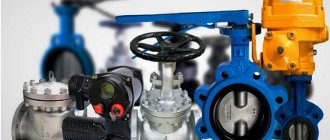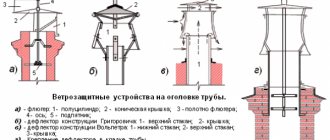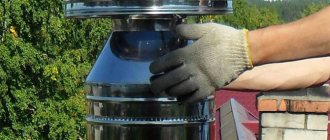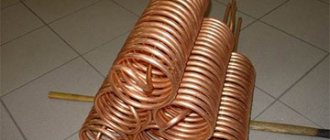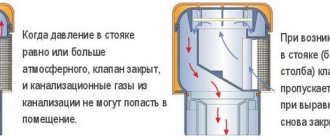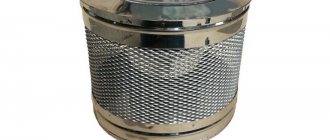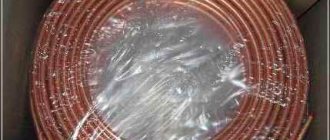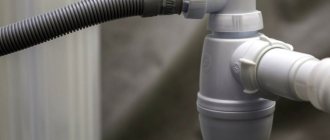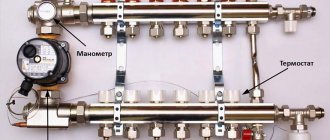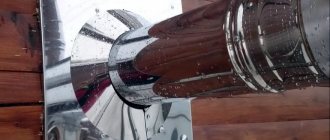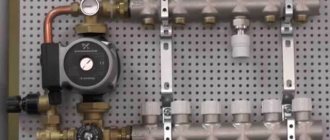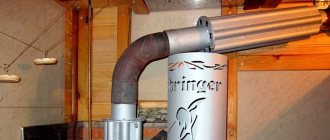The chimney-convector is a hollow metal structure that is connected to the outlet pipe of the boiler or combustion chamber of the furnace. Its function is to remove exhaust gases and fuel combustion products, as well as additional heating of the room through the use of secondary thermal energy.
The design can be easily done independently, using basic skills in working with a welding machine and having general knowledge and understanding of the principles of operation of furnace equipment.
What is an economizer and why is it needed?
Convector chimney is a heat exchanger made of high-alloy heat-resistant steel, installed directly on the pipe of a heating boiler or sauna stove and used to increase the heating rate of the main space and effectively supply warm air to adjacent rooms.
The use of an economizer is preferable if the fireplace is regularly used as the main heating device. In this case, the device will be able to take over the function of radiator heating, significantly increasing the efficiency of the entire heating system. Maximum efficiency in the operation of a chimney-convector can be achieved by installing it on the pipe of a solid fuel boiler.
Convector-type chimneys are effective for organizing heating in bathhouses. In such cases, models are used with the ability to block convection channels in order to direct all the energy generated by the fireplace to quickly warm up the steam room.
Reviews about the Rimbaud chimney
The product line includes many convector chimneys, each of which has its own diameter, wall thickness and base units. For example, if in front of you is a Rambo thermophore with a diameter of 120 mm, then its weight is 4.8 kg, and it will be based on heat-resistant steel.
The overall dimensions of this product are 200 x 200 x 1000 mm. This chimney-convector, reviews of which can help you make the right choice, is used for accelerated heating of the room, which is ensured by the extraction of heat from flue gases escaping outside. This equipment is ideal for protecting infrared radiation. After all, powerful heat emanates from the chimney. This element is used most often with bathhouses, but in some cases it can also be found in designs with heating stoves.
This convector has an original design, because consumers quite often compare it with analog products. According to users, convective holes in the case promote more intense passage of air flow. This chimney-convector has a long service life, this, according to the owners of country real estate, is ensured by the fact that the product is based on high-alloy corrosion-resistant steel, which contains a chromium content of at least 13%. The outer casing is 0.5 mm thick, while the inner pipe is 1 mm thick.
How does a convector work?
The economizer has a modular design consisting of two steel pipes of different diameters. The outer pipe acts as a heat exchanger casing and is made of 0.5 mm hardened steel sheet. The internal smoke exhaust module is made of steel 1 mm thick and ensures the passage of hot gases.
Some models are equipped with a top casing made of artificial or natural stone, designed to accumulate and evenly distribute heat in the heated space. The design of such a chimney completely eliminates the entry of carbon monoxide into the room: only heated air circulates in the external module of the convector, other gases remain inside the completely sealed core.
The materials used to create the furnace convector have a high degree of heat resistance and are resistant to corrosion and oxidation.
The most popular tube heaters
The most popular models of tube convectors are Termofor units. There are two types of devices available:
- chimney-convector 1, which can heat only one room;
- chimney-convector 2 for heating two adjacent rooms.
Chimney-convector - for adjacent rooms
Termofor consists of several pipes that have standard sizes - 0.65 m or 1 m. The diameter of the internal part is 115 mm, and the outer casing is 220 mm.
Termofor 1 consists of two pipes, which are equipped with decorative overlays. The model for heating several rooms has an angular shape. Transform 2 is equipped with a set of four pipelines and linings.
This installation is similar in principle to a coaxial pipe. To increase the productivity of the unit, an additional air duct is installed on the convector pipes. It improves air circulation inside the unit.
Principle of operation
During the combustion of fuel in the furnace, a large amount of hot gas is released, which is discharged outside the heated room through a pipe. The economizer allows you to use the gas removed from the fireplace for additional heating.
A chimney convector works on the principle of a simple heat exchanger with natural convection of air masses. Cooled air is sucked into the convective holes of the outer tube of the product and, heated by the hot chimney pipe, gradually rises to the top, spreading throughout the entire room. Slowly cooling, the air masses descend and their path repeats again.
The principle of operation of a convector on a chimney pipe
The principle underlying the operation of a chimney convector is that heat is transferred by convection currents generated by the convector. By and large, this is a constant circulation of air flows through a housing or a closed chamber, which occurs from the bottom up. This is due to the fact that cold air masses are heavier than hot ones. Combustion products are released into it.
The principle of operation of a convector on a chimney
The coaxial design of such a chimney is made of two pipes.
There is a chimney pipe in the center, with air pockets near it. When air passes through them, it heats up:
- first, the central pipe is needed to discharge combustion products into the environment;
- the other looks like an external contour, which is responsible for capturing cold air masses. It is this that prevents the system from heating up too much.
Convector chimneys perform well even in places where winters are very cold. When choosing a model, you should pay attention to the clearance of the chimney pipe. It is better that it be as large as possible.
Economizer chimneys are absolutely safe for indoor installation. Considering the fact that its arrangement is carried out on the principle of a coaxial pipe, you can choose wooden walls as the installation location for it.
Types and designs
The design of a furnace convector can be varied depending on its functional purpose:
- With two pipes. Used to heat one living space.
- With four or more pipes. They are used when it is necessary to heat two or more adjacent rooms.
- For baths. They are distinguished by the ability to block the ventilation holes in order to increase the heating rate of the steam room and increase the maximum air temperature in the heated space. Some models of sauna economizers are equipped with a special steel mesh for laying stones.
To ensure uniform heating of residential premises, economizer designs have convective openings on the outer part, which ensure cooling of the gas outlet pipe and efficient circulation of heated air.
The length of the product can vary from 50 cm to 1 meter, depending on the goals pursued during the installation of the economizer and the design features of a particular heating system.
The longer the convector is, the larger the area of its contact with the main pipe, which means that the air in the heated space is heated faster.
Short convectors are suitable for use in rooms with low ceilings.
Operating principle
The convector is installed as a starting fragment in the stove chimney. The length of the block can be from 0.5 to 1 m; with increasing dimensions, the contact area with the chimney and the rate of air heating increase. Shorter options are usually installed in rooms with low ceilings. It is worth noting that the chimney convector does not distribute carbon monoxide in the operating area. The system works solely due to the circulation of air heated by the temperature of the chimney pipe.
If the design provides 2 pipes, then this model is intended for heating one room, and for heating two rooms, 4 sections are required. Steel pipes are attached to them, which penetrate into the adjacent room through the wall. Channels for the passage of communications are arranged in advance, bypassing the contours of the installed slab. In the case where the partitions are made of materials that are flammable, the product is wrapped in a layer of thermal insulation. Usually basalt fiber is used for this purpose.
The length of the supply pipes determines the distance between the furnace and the partition; the more this parameter can be reduced, the lower the losses. The factory configuration includes products with a length of 0.5 m, but if desired, you can “stretch” them yourself by taking a steel piece of a suitable diameter. In exceptional cases, it is allowed to use corrugation if the location of the furnace does not allow the use of a straight system. The end of the pipe, which goes out into the adjacent room, is covered with a decorative cap in the form of a mesh.
Products designed to supply cold air are placed at a height of 20 cm from the floor level. To enhance circulation, a fan is installed at the lower inlet to increase the flow rate. Cold air enters through the lower pipe and, having been heated in the convector, returns as a warm stream through the upper outlets. For the greatest effect, the latter are released under the ceiling. Cooling down, the air again enters the lower pipe, and the heating procedure is repeated.
Advantages and disadvantages
The convector chimney has a number of significant operational advantages:
- Affordable price.
- Easy assembly and installation.
- Low fire hazard.
- Protection from IR radiation and carbon monoxide.
- High efficiency of the heating system due to the reduction of fuel volumes and the organization of retention of heat entering the pipe indoors.
- Regulating the degree of heating by closing the convection openings (possible when choosing the appropriate economizer models).
- The durability of the product is subject to the correct choice of its design and high quality materials used in production.
Among the disadvantages of using an economizer when organizing heating systems, the following should be noted:
- The need to constantly protect the product pipes from contact with flammable objects.
- Complicating the process of cleaning gas exhaust systems throughout the entire chimney structure.
- Increasing the space occupied by the heating system.
- The need to ensure additional circulation of air masses in adjacent heated rooms.
- The finishing of walls adjacent to the convector system must be carried out in advance, taking into account the maximum recommended distance from the economizer to the ceilings from a fire safety point of view. Otherwise, repairs may require complete dismantling and reinstallation of the convector.
Obviously, if it is necessary to regularly heat one or more rooms with a low-efficiency stove, the advantages of an economizer will fully cover the inconveniences that arise during its installation and operation. The low cost of devices of this type will allow them to be used even in heating projects with a low budget.
Advantages
A chimney convector is a device that helps you save money by using the heat that accumulates in the area of the chimney pipe. This increases the efficiency of the existing furnace, allowing you to heat additional space. This convector has a number of advantages:
- ease of installation, allowing you to organize heating through pipes leading into the adjacent room;
- safety of the system, which is ensured by the absence of contact with combustion products;
- high efficiency, allowing you to warm up rooms without additional energy consumption.
The chimney-convector is presented in the form of an inexpensive system that allows heating adjacent rooms. This design finds its application both in private homes and in bathhouses where a stove is installed.
Convector service life
The service life of a properly selected and installed economizer, subject to all technical requirements, is practically unlimited. Devices of this type are made of high-strength materials that are resistant to oxidation, rust and wear under high temperatures.
Convector chimneys have a simple design and a minimum of working components, so if installed and used correctly in the system, there is simply nothing to break in them.
However, manufacturers of convector-type chimneys recommend regular preventive inspection of the gas exhaust system in order to prevent possible sealing defects and other technical malfunctions.
Scope of application of the convector chimney
There are three types of convectors: water, electric and gas. Installation of a convector chimney is required only on gas heating systems and sauna stoves.
Convector chimneys are successfully used for the accelerated rate of heating of adjacent rooms, which is carried out by selecting heat flows from gases escaping through the smoke. In addition, they serve as a protective mechanism against infrared radiation that comes from the chimney. They are easy to install. They are also easy to operate. If the design is simple and without a fan, then electrical wiring is not required.
Convector consisting of a stove and chimney
The convector chimney can be installed in two ways:
- connecting the pipe to the general chimney;
- arrangement of your own smoke removal system.
Advice! The second method will allow you to heat two rooms at the same time. For example, a convector is installed in one room, and a chimney is installed in another. This system is ideal for a bathhouse with a relaxation room.
Cover for the chimney convector, which gives it an aesthetic and beautiful appearance
Make it yourself or order it
An economizer is a simple device in design that can be made independently if you have the necessary materials and tools (welding machine, file or metal scissors).
If it is not possible to make a convector pipe on your own, you can purchase it at a hardware store and select a model that is suitable in terms of configuration and cost.
Tips for choosing
If you do not have the desire or ability to make an economizer yourself, you can buy one. When choosing the right product, you should pay attention to the following nuances:
- The quality of welding at the joining assemblies should not be in doubt: the welding line should be smooth and uniform, and the parts should not dangle relative to each other.
- The surface of the parts should be free of stains, tarnish and other defects, since their presence indicates the low quality of the material used.
Building regulations
The selection and installation of an economizer must be carried out in compliance with the requirements of current regulations, in particular:
- SNiPa 23-01-99 “Construction climatology”.
- SNiPa 41-01-2003 “Heating, ventilation and air conditioning”.
- SNiPa 42-01-2002 “Gas distribution systems”.
- SP 42-101-2003 “General provisions for the design and construction of gas distribution systems made of metal and polyethylene pipes.”
- PPB 01-03 “Fire Safety Rules in the Russian Federation”, as well as other current documents regulating the installation and operation of convector-type chimneys in the type of buildings being developed.
Making and installing a convector with your own hands
The economizer assembly is carried out in several stages:
Drawing and diagrams
Before starting work, you should take all the necessary measurements to calculate the required dimensions of the product. The parts necessary for the work must be plotted on the appropriate drawings and diagrams in order to simplify and increase the accuracy of the upcoming work.
It should be taken into account that:
- The inner pipe must be at least 1 mm thick and have an outer diameter that matches the diameter of the stationary chimney. You can weld it from a rectangular metal sheet.
- The prepared workpiece will be cut according to the length of the existing chimney.
- If it is intended to make one pipe, its diameter should provide a distance of several centimeters between its inner part and the outer part of the gas outlet channel.
- The length of the external modules should be slightly shorter than the internal flue pipe. The optimal thickness of steel used for these elements is 0.5 mm.
- If several small-diameter tubes are selected as an external module, it is necessary to calculate their number to completely cover the internal gas outlet channel during the welding process (the tubes are attached to the body of the internal pipe in a circle, like flower petals).
- If one large-diameter pipe will act as an external pipe, it is necessary to cut 2 blanks for truncated cones from an additional sheet of steel and evenly cut convector holes into them. These parts will become the top and bottom parts of the heat exchanger.
Size calculation
Calculation of the dimensions of all of the above elements must be carried out taking into account the design features of a particular heating system, as well as the dimensions of the heated room or rooms. To simplify your work, you can use a special table:
| Convector | |||
| d | H | h | n |
| 110 | 570 | 500 | 5 |
| 115 | 570 | 500 | 5 |
| 120 | 570 | 500 | 5 |
| 130 | 570 | 500 | 6 |
| 150 | 570 | 500 | 6 |
| 200 | 570 | 500 | 8 |
Where d is the diameter of the gas outlet pipe, H is the height of the gas outlet pipe, h is the height of the heat exchanger.
How to make a heat exchanger for a chimney with your own hands?
Necessary materials
To create your own chimney with an air convection effect that resembles Termofor, you need to use the following materials:
- at least 8 thin pipes with a diameter of 32 mm and a length of 600 mm;
- pipeline 0.6 m long with an internal diameter of 57 mm;
- massive pipe with a diameter of 0.3 m;
- 2 sheets of high-quality metal measuring 350x350 mm;
- piece of plywood 350x350 mm.
To make a kind of heat exchanger, it is best to use food-grade stainless steel. It is capable of operating at high temperatures and is resistant to aggressive substances. A structure made from this material will serve you for decades.
Square and round stainless steel pipes
Galvanized steel is also suitable for the unit. You just have to take into account that it can release toxic substances if it heats up above 200°C. But in most cases, conventional home furnaces emit gases in a smaller temperature range. Therefore, galvanized steel can be safely used.
Step-by-step manufacturing instructions
- Cut two circles with a diameter of 150 mm from metal sheets.
- Make nine holes on the resulting circles. One in the center with a diameter of 57 mm, and the other along the contour of the sheet with a diameter of 32 mm.
- Carry out the same steps with a piece of plywood. It will act as a template.
- Insert pipes into the finished plywood circle. The sheet should be placed in the middle of the pipeline.
- At the ends of the pipes, attach a metal circle that needs to be welded to them.
- Remove the template and weld another metal circle to opposite ends of the pipes.
- Insert the finished structure into a cylinder with a diameter of 0.3 m and weld it. All joints must be treated with fireproof sealant.
- Homemade Termofor must be covered with a layer of stove varnish.
Drawing of a convector for a chimney
Connect this unit using pipes to the stove equipment.
The convector chimney is an original design that allows you to obtain the maximum amount of thermal energy using a small amount of fuel.
[ads-pc-2][ads-mob-2]
Installation features
The economizer is installed directly into the lower part of the chimney. The structure exits the body of the chimney and then enters it again, remaining an intermediate part of the gas exhaust system.
The length of the convector is selected based on the height of the room, as well as the required distance of the structure from the wall. The closer the economizer is from the wall partition, the greater the heat of the air exhausted through it. Most factory-produced convector pipes are equipped with additional modules to increase their actual length. If such a part is not available, you can use a corrugated stainless steel pipe.
The lower part of the convector is mounted directly above the floor. During the installation process, it is recommended to strengthen this area with a sealing gasket, and only then treat the seams with a specialized sealant.
It is important to tightly connect both ends of the product with a stationary chimney, preventing further gases from the inner pipe from entering the room.
After finishing the work on making a chimney-convector with your own hands, it is recommended to paint it with heat-resistant paint black: this will increase the thermal conductivity of the product.
Advantages of converter devices
Such chimneys have many advantages, which have already been appreciated by many. These include:
- Easy installation. The convector is connected to a pipe on one side, and on the other to a chimney outlet leading outside.
- Safe operation. Through the main chimney, combustion products go outside without lingering indoors.
- Benefit. The room heats up very quickly, using very little energy.
- Some purchased models are equipped with the function of shutting off the chimney, due to which you can regulate the intensity of heat release.
- When a device is made of high-quality materials, there is no doubt about its durability.
In general, a chimney-convector is really an inexpensive design that you can make yourself. It has many advantages, thanks to which it is widely used for heating baths, residential buildings and other premises.
DIY chimney heat exchanger:
Frequent errors and problems during installation
The convector chimney is easy to install and operate, so its installation does not require much effort. However, problems may arise due to the wrong choice of diameter or length of the product.
The main mistakes when installing an economizer can be associated with the incorrect height of its nozzles relative to the floor covering (too high or low), as well as with poor-quality sealing of the joints of the product with a stationary pipe.
Difficulties in installing the economizer are caused by the need to build it up using a corrugated pipe with subsequent verticalization of the structure relative to the wall ceilings. In this case, you should additionally use sealant to strengthen the joints, and also level the structures using a building level.
Maintenance and cleaning
For the economizer to function fully, it is necessary to regularly carry out preventive inspection and repair of all its parts. As a rule, this task comes down to updating the sealant layer if necessary, as well as cleaning the internal gas outlet pipe.
The pipe should be cleaned simultaneously with the stationary chimney, if necessary, completely or partially dismantling the convector system, using a mechanical (using special brushes) or chemical (using specialized compounds for cleaning stainless steel chimneys) method.
Expert advice
Experts in chimneys of heating systems in suburban buildings recommend purchasing high-quality economizers from trusted manufacturers - i.e. Don't skimp on the device. According to their opinion, the optimal solution for supplementing a stationary flue system with a convector would be professional implementation of the installation, as well as subsequent maintenance of the device.
A convector chimney is a safe and inexpensive device that can increase the efficiency of a heating system without increasing the financial costs of its operation. Devices of this type are characterized by durability and simplicity of design, which allows you to assemble and install them yourself and forget about replacing or major repairs of the gas exhaust system for a decade.
Now you know how to make your oven work 100% without major investment. Subscribe to our articles and share useful information with friends. See you again!
(
2 ratings, average: 5.00 out of 5)
